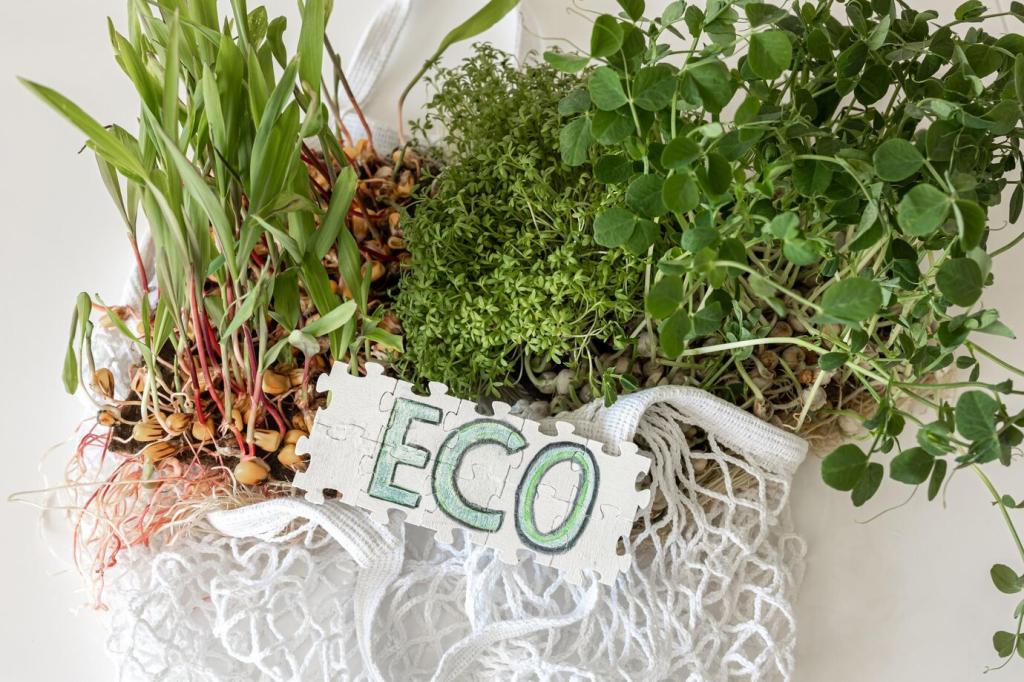Eco-Conscious Color Palettes: Design With Purpose
Chosen theme: Eco-Conscious Color Palettes. Step into a world where every hue respects the earth, every shade tells an ethical story, and color choices become daily acts of care. Subscribe to stay inspired and help shape a brighter, gentler spectrum.
Every color has a footprint—from mineral extraction to pigment processing and packaging. Choosing low-impact dyes, responsibly sourced minerals, or plant-based inks reduces harm and transforms palettes from decorative choices into measurable environmental commitments.


Building a Sustainable Palette
Collect references from mossy greens, weathered bark, river stones, and soft coastal fog. Translate these hues into a core palette of grounding neutrals with one or two vibrant accents that celebrate place without overwhelming your environment.
Building a Sustainable Palette
Choose a concise set of base tones, then build gentle layers for depth. Fewer, better colors mean fewer mismatched leftovers, more coherent storytelling, and timeless combinations that look fresh long after seasonal trends pass.
Materials, Inks, and Finishes That Align
Opt for low- or zero-VOC formulations and mineral or clay-based paints that reduce indoor pollutants. These finishes often create velvety, light-responsive surfaces that feel organic—inviting calm while supporting healthier air for everyday living.


Materials, Inks, and Finishes That Align
Look for pigments derived from botanical sources, responsibly mined minerals, or recycled streams like reclaimed carbon black. Thoughtful sourcing helps cut toxic byproducts and accentuates authentic textures that tell a story of resourcefulness.
Greens for Renewal, Browns for Grounding
Deep greens can signal renewal and hope, while earthy browns root us in stability. Together, they invite slower rhythms, mindful routines, and a sense of belonging that encourages long-term care for the environments we share.
Cool Blues and Calm Focus
Sea and sky blues evoke breath and spaciousness. In studios, offices, or reading nooks, they reduce visual noise and promote focus, reminding us to pause, reflect, and choose materials that echo the stillness of open water.
Accent Colors as Calls to Care
Use restrained, bright accents—like sunny marigold or berry red—to highlight sustainable actions: refill stations, repair areas, or recycling cues. Color becomes a gentle nudge, guiding behaviors without heavy signage or visual clutter.
Accessible, Ethical, and Digital Implementation

Build palettes that meet or exceed WCAG 2.1 contrast guidelines—aim for 4.5:1 for body text. Legible color empowers everyone and reduces redesign cycles, conserving time, resources, and developer effort across platforms.
Storytelling, Community, and Ongoing Stewardship
Explain where pigments come from, how they are made, and why they endure. Short notes or QR links can reveal sourcing and care tips, transforming color into an educational journey worth subscribing to and sharing.
Storytelling, Community, and Ongoing Stewardship
Host palette polls, ask for room photos, and feature community experiments. Comments and subscriptions help refine tones, uncover accessibility needs, and celebrate creative reuse—proving sustainability thrives when many voices join the conversation.


